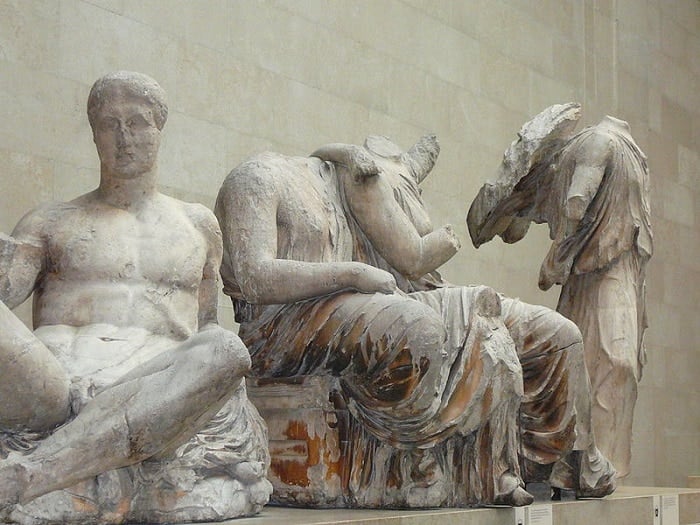
The Parthenon Marbles, currently held at the British Museum, are by far the most famous of all the ancient Greek works of art displayed in museums outside the country and are surely the most controversial.
But many other equally magnificent pieces of ancient Greek art are displayed in various museums around the world, and sometimes these priceless treasures are overshadowed by our focus on the lost Marbles.

The Venus de Milo, a Greek goddess at the Louvre
Discovered on the island of Milos in 1820, the Venus de Milo is one of the most exquisite examples of ancient Greek sculpture. Immediately recognizable by her missing arms, the iconic sculpture remains shrouded in mystery.
Her arms have never been discovered to this day, and there is a healthy debate about who the sculpture portrays. Is it Aphrodite, who was often shown half-naked, or the sea goddess Amphitrite, who was venerated on Milos?

The stunning ancient Greek Meidias Hydria in the British Museum
This vase, known as the Meidias Hydria, is the finest object in the first collection of Greek vases assembled by Sir William Hamilton and sold to the British Museum in 1772.
The figures depicted on the vase are divided into two zones.
The upper zone illustrates the abduction of the daughters of Leukippos by Castor and Polydeukes with Aphrodite conniving in the abduction while the lower zone depicts Herakles performing his final labor.
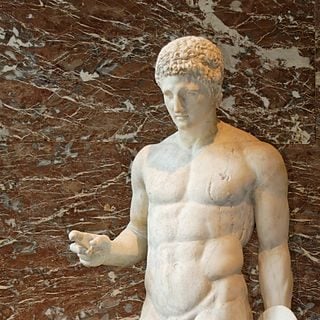
Discophoros at the Louvre Museum
This discus thrower is a reproduction of a lost bronze original created by the Greek sculptor Naucydes at the beginning of the fourth century BC.
The athlete is portrayed adjusting his position at the very instant before the throw.
This statue was part of the collection of antiquities at the Villa Borghese in Rome, where it stood with three other athletes around “The Gladiator,” which also entered the Louvre at the same period.
This occurred in 1808, when Napoleon Bonaparte purchased the collection from his brother-in-law, Prince Camillo Borghese.
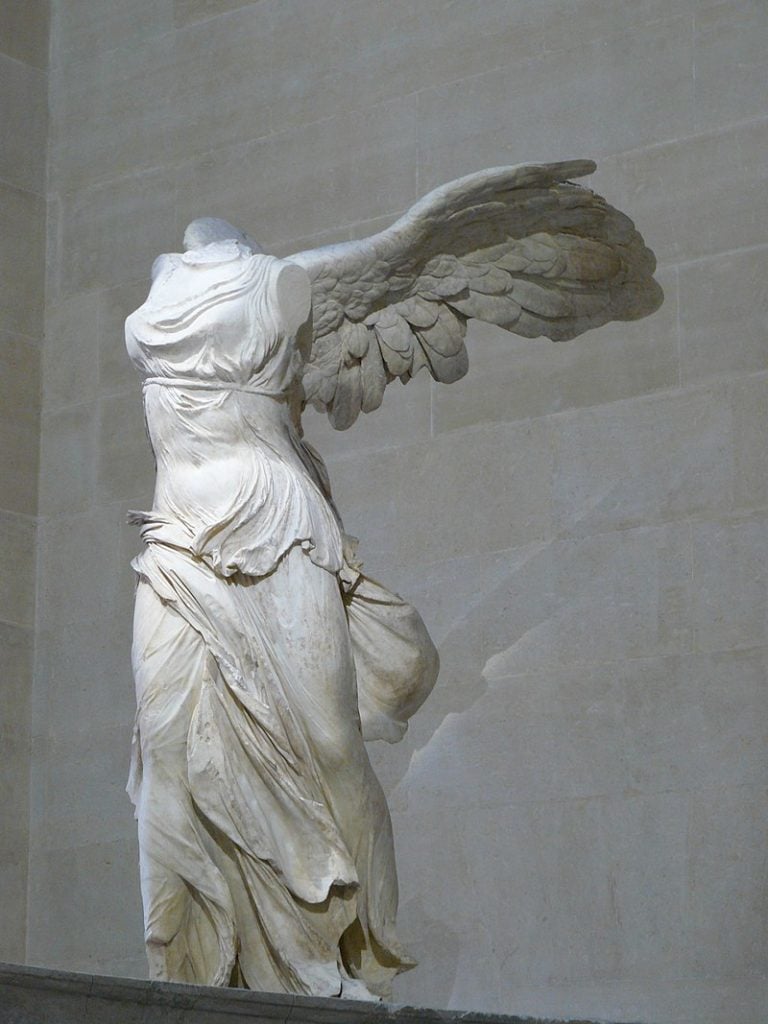
The Nike of Samothrace, a masterpiece of ancient Greek art
The Winged Victory of Samothrace is widely considered to be one of the most celebrated sculptures in the entire world.
Unearthed in 1863 on the small, beautiful island of Samothrace in the northwest Aegean, it is one of the Louvre’s most visited sculptures. However, you can find a faithful replica of the sculpture on the island today.
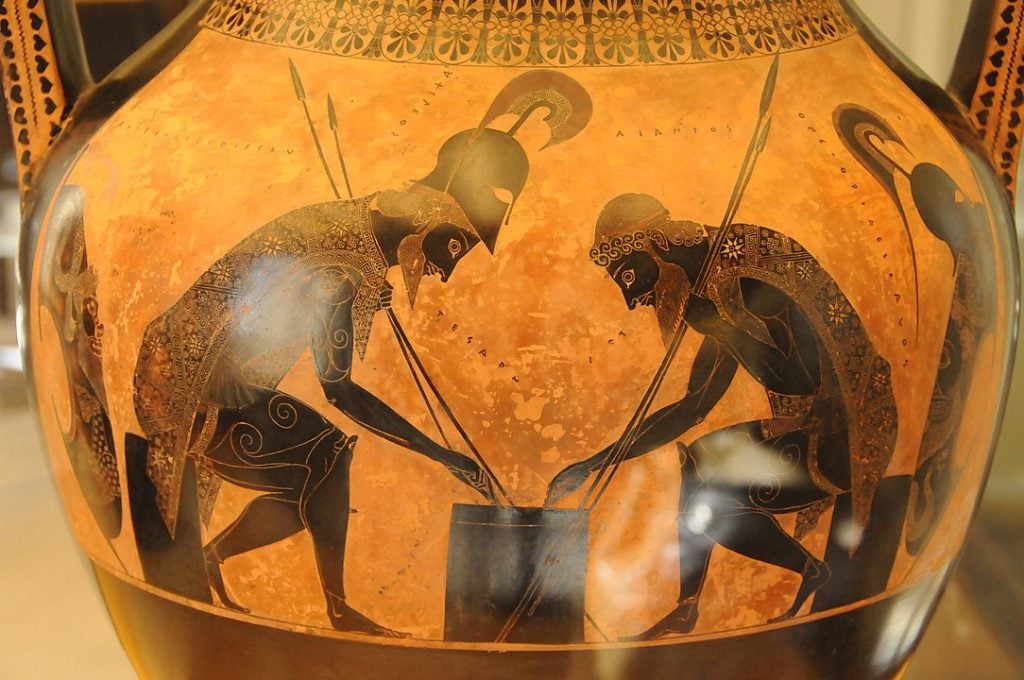
The amphora that depicts Achilles and Ajax playing dice
Widely regarded as Exekias’ masterpiece, this famous amphora depicts Achilles and Ajax seated and playing dice; and you can read out the points won—four and three, respectively.
This is indicated by the inscriptions that emerge from the figures’ mouths, as if in a comic strip. The two are portrayed fully dressed for battle with spears and body armor.
This intimate view of life in antiquity makes the amphora a unique work of Greek art.
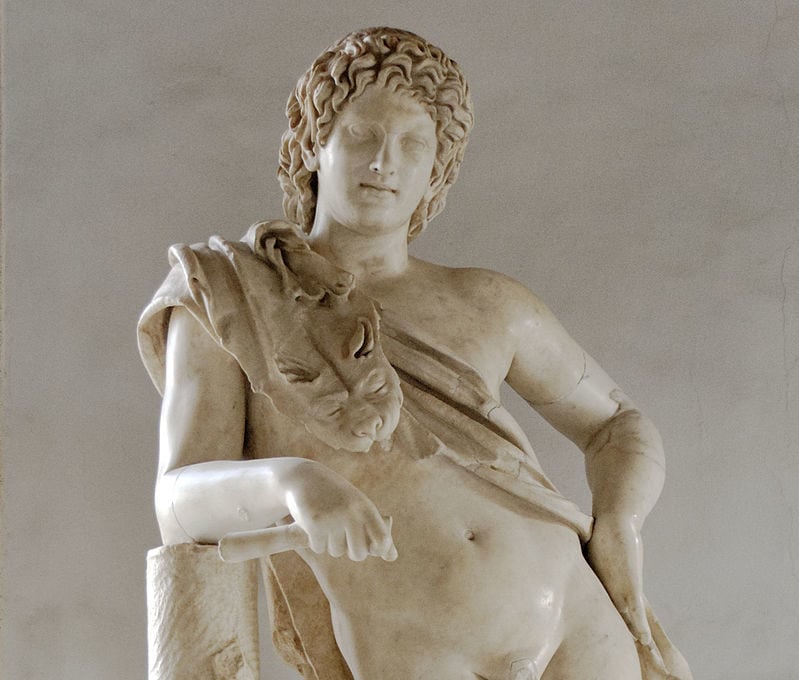
The Resting Satyr, a common figure in Greek art, at the Capitoline Museum in Rome
The Resting Satyr, or Leaning Satyr, is attributed to the ancient Greek sculptor Praxiteles.
In ancient Greek Mythology, satyrs are male companions to Dionysus and are known for their love of wine, women, and playing music on their pipes or flutes.
There are 115 similar sculptures of satyrs featured at museums around the world, making it a very common theme in Greek art, but the very best example of this subject can be found at the Capitoline Museum in Rome.
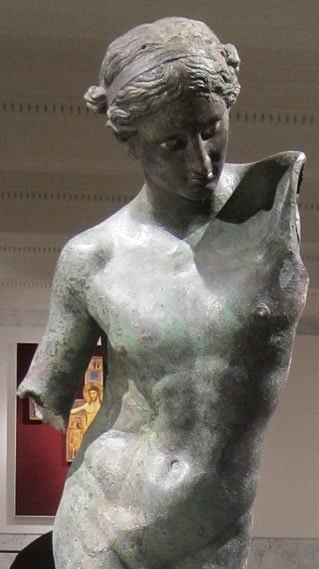
The Cleveland Apollo, or the Python Slayer, a rare bronze work of Greek art
This life-sized bronze sculpture, a depiction of a youthful Apollo, is engulfed in controversy about who its actual creator was.
The sculpture is currently considered to be a product of Praxiteles’ workshop and may be one of the only large Greek bronze statues which can be attributed to a Greek sculptor.
As rumors have circulated that the statue was looted from Greece, the country has made repeated attempts to have the priceless masterpiece of Greek art returned to its home.
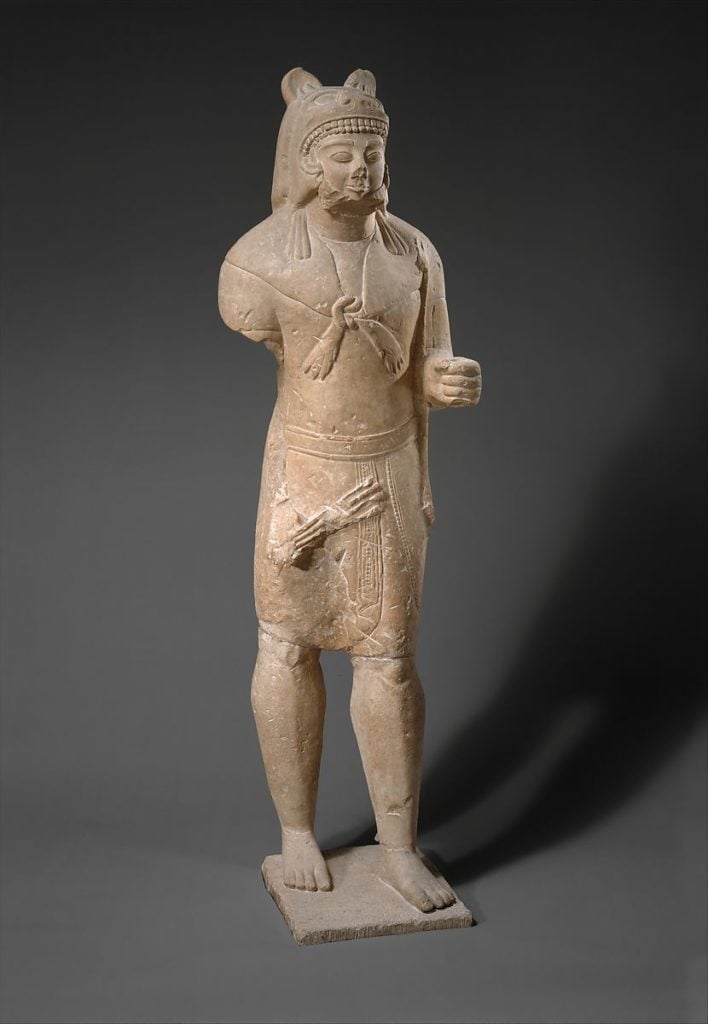
Limestone Herakles, at the Metropolitan Museum of New York, USA
Thought to have been sculpted in 530 B.C. – 520 B.C., this statue of Herakles (Hercules), from Cyprus, was created during the Archaic period.
Despite excessive, extreme restoration in the nineteenth century, which unfortunately altered many of its original features, this figure is evidence that Cypriot sculptors were working on a large scale as early as the beginning of the sixth century B.C..
See all the latest news from Greece and the world at Greekreporter.com. Contact our newsroom to report an update or send your story, photos and videos. Follow GR on Google News and subscribe here to our daily email!



